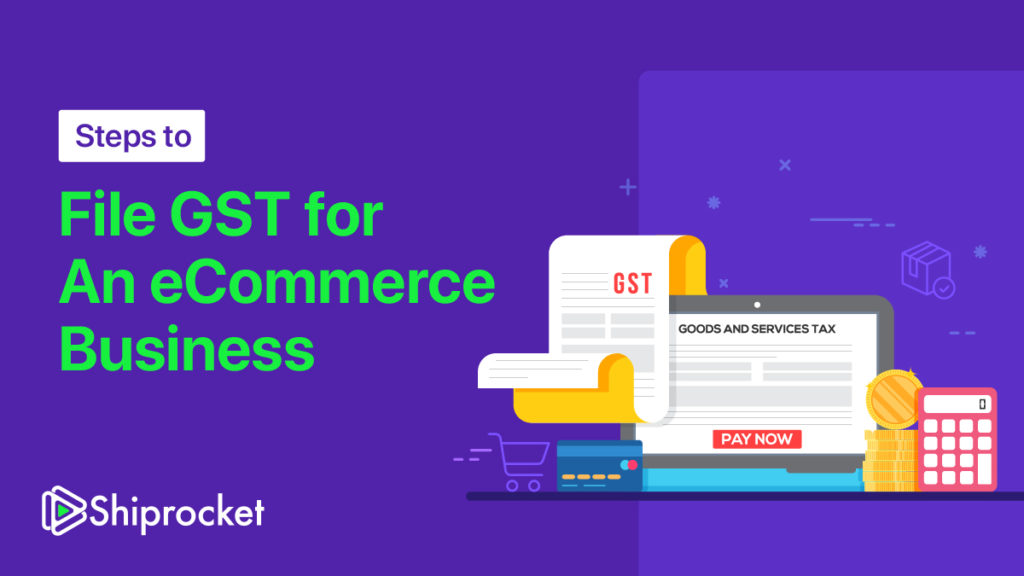What are the Steps to File GST for eCommerce Businesses? [Guide]
Just like any other business, filing GST for eCommerce businesses is equally important. With the growth of eCommerce in India, the Government has provided special provisions and regulations that online sellers must comply with.
GST, also known as the Goods and Services Tax, is a single domestic indirect tax law for the entire country. It has replaced many indirect taxes in India like excise duty, VAT, services tax, etc.

It is a destination-based tax that is levied on every value addition. The Goods and Service Tax Act was passed in Parliament on 29th March 2017 and came into effect on 1st July 2017.
According to GSTN, there are 1.28 registered GST payers in India as of June 2021. As an eCommerce seller, you must register for GST and keep up with the changes in the regulations related to GST.
GST for eCommerce Businesses
Like any other seller, online sellers also are required to file GST returns. GST for eCommerce businesses includes GSTR 1 on a monthly or quarterly basis (depending upon the turnover) along with GSTR 3B every month.
An ordinary D2C seller would generally get their books of accounts written through accounting software. This software would provide the data & reports required to file GST returns.
On the other hand, those selling on eCommerce platforms like Amazon and Flipkart can download their GST-based reports from the platform itself. They also provide the commission invoices and other reports that are useful for reporting & reconciliations.
Tip: Always reconcile such reports with the books of accounts for any discrepancies before filing the GST.
Steps to File GST for eCommerce Businesses
Under the new regime, filing GST returns has become an easy-peasy task. Today, you can file GST returns online using GSTN’s software or apps. This software will auto-populate the details on each GSTR form.
Just like any other business, here are 9 easy steps to file GST for eCommerce businesses online:
Step 1
Open the GST portal (www.gst.gov.in).
Step 2
You’ll get a 15-digit GST identification number issued depending on your state code and PAN number.
Step 3
Upload your invoices on the GST portal. An invoice reference number will be issued against each invoice.
Step 4
Next, file your outward return, inward return, and cumulative monthly return. If there are any errors, you’ll get the option to correct them and refile the returns.
Step 5
File your outward supply returns in GSTR-1 form via the information section at the GST Common Portal on or before 10th of the following month.
Step 6
Details of outward supplies furnished by the supplier will be made available in GSTR-2A to the recipient.
Step 7
Now, the recipient has to verify, validate, and modify the details of outward supplies, and file credit or debit notes.
Step 8
Next, the recipient must furnish the details of inward supplies of taxable goods and services in GSTR-2 form.
Step 9
The supplier can either accept or reject the modifications of inward supplies made available by the recipient in GSTR-1A.
That’s it. Now that you understand the steps to file GST for eCommerce businesses, we hope you’ll be an active and aware taxpayer.
While tax evasion is a crime, cost reduction isn’t. Now, cut your freight bills in half and start shipping with India’s #1 Shipping solution at just Rs. 19/Kg.







